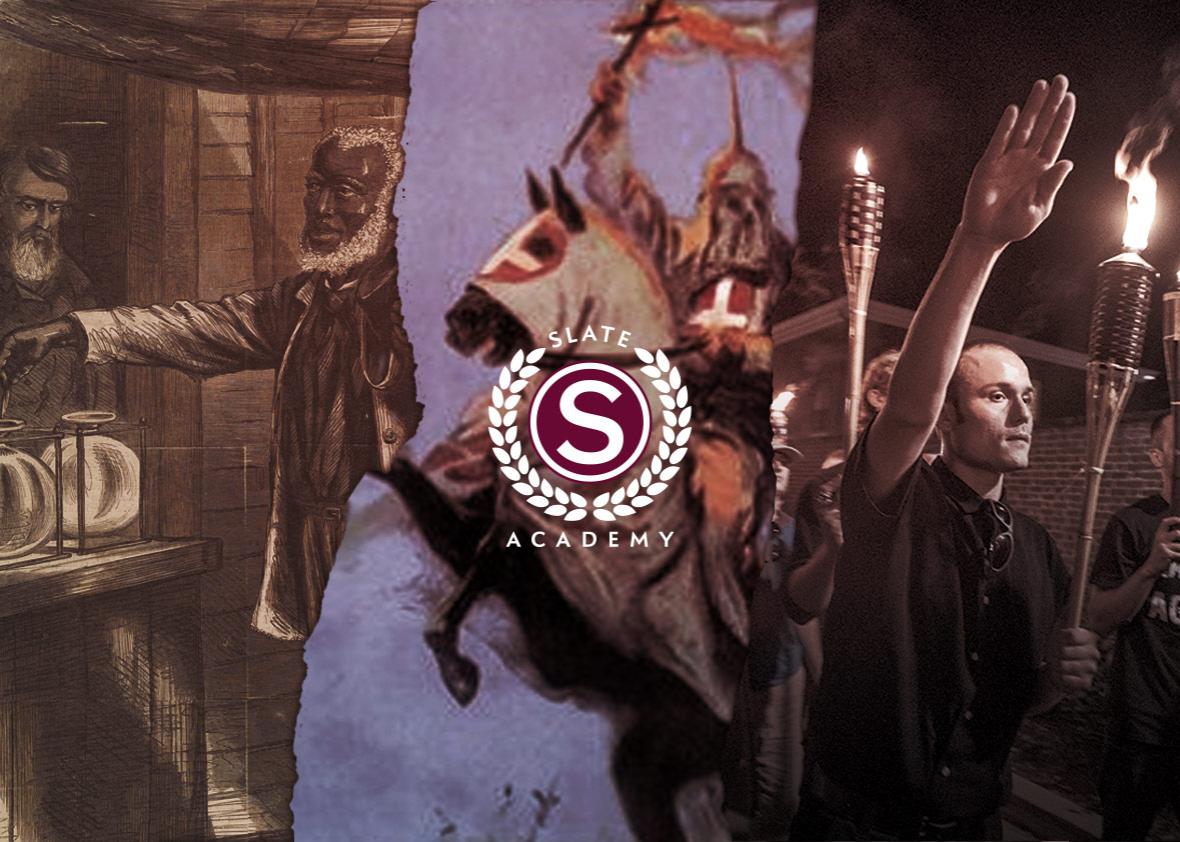To access all features of this Slate Academy series, visit Slate.com/Reconstruction
As soon as we finished our History of American Slavery podcast, we knew we wanted to do a sequel on Reconstruction. For all of its importance to America’s history, the Reconstruction era is poorly understood, and we wanted to shed a little light on the period for people who aren’t as into academic history as we are. Reconstruction gets lost in our national story, and in American history survey classes: neither a bloody conflict like the Civil War nor a period in living memory like Jim Crow. But while short-lived, Reconstruction was one of the most dramatic periods in our country’s history—a time of tremendous movement, unprecedented change, and important questions that we’re still trying to answer.
Consider just a few of these changes. After nearly 80 years of enslavement under the American flag, 3.5 million black people joined the body politic as citizens, eager to start new lives and assert their rights. On the other side, more than 5 million white Southerners had to face their defeat and reconcile themselves to the Union. And everyone, North and South, faced huge questions: What do we owe people who suffered through slavery? Should those who rebelled against the United States retain their rights and privileges? What is the scope of the federal government, and how much should it do for its citizens? And, most critically, can blacks and whites live together as political equals?
In the History of American Slavery, we detailed a narrative, from the beginning of the trans-Atlantic slave trade to the end of the Civil War. For Reconstruction we’ve had to take a different approach. There was no singular Reconstruction. Instead, there were many Reconstructions that varied by state, region, and even locality. To try to capture that diversity, and to emphasize the sheer novelty that characterized the period, we’ve framed this series as an exploration of “experiments”—the different ways black people and their allies lived and worked after the war. Millions escaped slavery either penniless or nearly so. As the political situation shifted around them, they scoured the South for lost family members, got married, bought lands, planted crops, started schools, banded together in self-defense, and claimed their place in political life. The most successful among them—legislators, sheriffs, businessmen, landowners—risked retaliation from recalcitrant whites for trying to “rise above their stations.” Nevertheless, they rose.
So the theme of experiments allows us to tell some inspiring stories. At the same time, this is the period that sowed the ground for Jim Crow. In the History of American Slavery we often spoke of Northern complicity with slavery, an institution whose wealth helped build the North, and one that many Northerners profited from. (Unfortunately, this fact of history has been co-opted by whataboutists seeking to absolve the South from its guilt, as if slavery becomes less monstrous when the North is also responsible for its machinery.) Reconstruction was ultimately toppled by hostile forces, and the North was implicated in that too, through failures of resolve, failures to reckon with the sheer weight of the situation, failures of greed and prejudice and racism. Reconstruction was a humanitarian crisis, a human rights crisis, and a political crisis, one that posed a fundamental challenge to white Americans’ vision of their government.
Above all, freed people needed sustained defense from white people who fought to recreate or imitate the relations of slavery. The anger, bitterness, fear, and resentment of white Southerners was the greatest obstacle to a truly peaceful settlement.
For a time, in some places, the nation met these challenges. But eventually, the people in power who could have made a difference gave up the fight. Our story of Reconstruction, a story of experiments and radical thinking, is a story of this, too.
Listen to Reconstruction
Slate Plus members get extended, ad-free versions of our podcasts—and much more. Sign up today.
Subscribe to Reconstruction
Copy this link and add it in your podcast app.
For detailed instructions, see our Slate Plus podcasts page.
